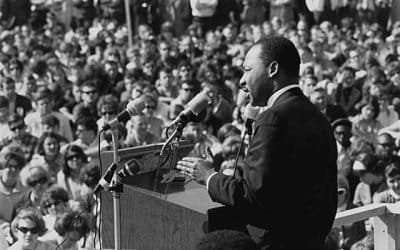California Democratic Assemblyman Paul Koretz is at it again. A year ago, Koretz tried to cash-in on widespread fears of terrorism by sponsoring a bill to ban .50 caliber rifles in the state. To woo emotive soccer moms, he nonchalantly labeled the rifles “sniper weapons” and boldly proclaimed that the .50 BMG “would be an ideal choice for use in an act of terrorism.” It was a targeted attack on a very small percentage of gun owners that he assumed no one would bother to defend. He was wrong, and his proposed assault on the Second Amendment was temporarily repelled.
But on April 29th, the California Committee on Public Safety is scheduled to vote on a rehash of the same prohibition, again introduced by Koretz. Assembly Bill 50 seeks to expand California’s current “assault weapons” ban by including identical measures for .50 BMG rifles. To twist the knife just a bit, the bill also bans .50 caliber ammunition, making it nearly impossible for Californians who already own .50 BMG rifles to actually use them. Unfortunately, many Californians do not even know what a “.50 BMG” rifle is, let alone why there seems to be this sudden “need” to ban them.
The acronym “BMG” stands for “Browning Machine Gun.” Although this may sound scary to some, the “BMG” designation is a reflection of the historical origin of the .50 caliber cartridge. A .50 BMG rifle is not a “machine-gun,” except for the fact that it is both a “machine” and a “gun.” Unlike the weapons that Rambo carries around the jungle, the .50 BMG rifles under consideration do not fire multiple times when the trigger is pressed (guns that do that are already illegal in California). In fact, the magazine capacity for most .50 BMG rifles is significantly less than that of a typical handgun. A .50 caliber BMG rifle fires a projectile that is about one-half of an inch in diameter. This is slightly larger than many other common rifle calibers, which fire projectiles with diameters of about one-third of an inch. In addition to firing larger projectiles, the maximum range of .a .50 BMG is greater than many other rifles. A typical .300 Winchester Magnum, for example, can effectively reach targets over 1300 yards away, but only if the shooter is capable of an extraordinary level of accuracy. Very few shooters will ever be able to achieve consistent hits at even half that range. The .50 BMG, on the other hand, can reach targets out at 2000 yards–but again, only for the rare shooter who is capable of such precision marksmanship.
Armed with knowledge of what a .50 BMG rifle is, one might expect that Koretz has compiled a long list of “reasons” why the .50 BMG rifle and its ammunition should be banned (Second Amendment arguments notwithstanding for the moment). The trouble is, he hasn’t.
Perhaps, one might speculate, there have recently been a large number of deaths with .50 BMG rifles in California or elsewhere in the country?
Nope. In fact, no one in California–or any other state–has ever been killed with a .50 BMG rifle. Never. In one of the most publicized sniper cases in recent history, John Allen Mohammed and John Lee Malvo (the infamous “beltway snipers”) used a .223 caliber rifle, not a .50 BMG.
Maybe there is evidence to suggest that the additional range afforded by a .50 BMG rifle poses some serious risk to innocent citizens?
Nope. To the contrary, when Mohammed and Malvo targeted the citizens of the D.C. area, they were never more than a mere 175 yards away. That distance is a small fraction of the effective range of many typical hunting rifles, and it certainly does not require the extended range of a .50 BMG.
So, are .50 BMG rifles somehow specially designed to make sniping innocent old ladies or school children easier?
Nope. Although Koretz claimed that they “would be an ideal choice for use in an act of terrorism,” .50 BMG rifles are huge, heavy, and clumsy. The EDM Windrunner, for example, is advertised as a “lightweight” version of a .50 BMG. It weighs a whopping 34 pounds and has a barrel 30 inches long. A hunk of metal that large and heavy is by no means easy to carry around. For his terrorist activities with a rifle, Mohammed chose the Bushmaster XM-15. It weighs a mere 7.33 pounds and features a very short 16-inch barrel (including the length of the muzzle brake). If someone’s goal is to terrorize innocent people, the .50 BMG is just about the most idiotic weapon choice possible. Koretz does more damage with his lousy pen.
Well, perhaps the .50 caliber rifles are popular weapons with criminals?
Nope. One of the reasons why no one in the country has been killed by a .50 BMG rifle might be that they are very expensive. Not many criminals can afford a .50 BMG. People who shoot them for fun are wealthy enough to afford the $7000 price tag for a rifle like the Windrunner, as well as the nearly $3 per round cost of shooting it. Criminals have always preferred cheap, disposable weapons like the “Saturday Night Special.” Any $200 hunting rifle would do a fine job for most criminal activities. And for the same price as a .50 BMG, a criminal could buy 35 of them.
Is it possible that .50 BMG rifles are not used for hunting or sporting purposes, and would that mean that the Second Amendment does not apply?
Nope. First of all, the Second Amendment was not written to protect hunting and sporting. It was clearly written to protect the right of citizens to defend themselves from thugs and tyrants. However, .50 BMG rifles are used for both hunting and sporting. Understandably, few people use.50 BMG rifles for hunting; no one likes lugging 34 pounds of metal through the woods. But for sporting, the rifles are used quite regularly. In California, the Fifty Caliber Shooters Association has been sponsoring target-shooting tournaments since 1985.
Peter Koretz can call the .50 BMG rifle a “sniper weapon” all he wants, but the fact of the matter is that any semi-accurate rifle is a “sniper weapon” in the hands of a sniper. For most criminal applications, the .50 BMG is a poor choice. Like many politicians pushing indefensible legislation, Koretz is counting on the public to trust him. Don’t. He has not bothered to provide even the slightest semblance of any “reason” for his proposed ban.
And yet, thanks to Assemblyman Koretz, the Committee on Public Safety may soon vote to further cripple the rights of all Californians. Well–almost all Californians. Koretz’s bill provides an exemption for the movie industry, since the freedom to make Arnold Schwarzenegger movies is apparently more sacred than the Second Amendment. Koretz, not coincidentally, represents the 42nd Assembly District, which includes Beverly Hills, Studio City, Century City, Universal City, West Hollywood, and Hollywood.
The California Assembly Committee on Public Safety is scheduled to vote on AB 50 on April 29th and can be contacted at the address below.
California Assembly Committee on Public Safety
Attention: Chairman Mark Leno
State Capitol
P.O. Box 942849
Sacramento, CA 94249
Phone: 916.319.2013
Fax: 916.319.2113
To comment on a California Assembly Bill online, click here.



